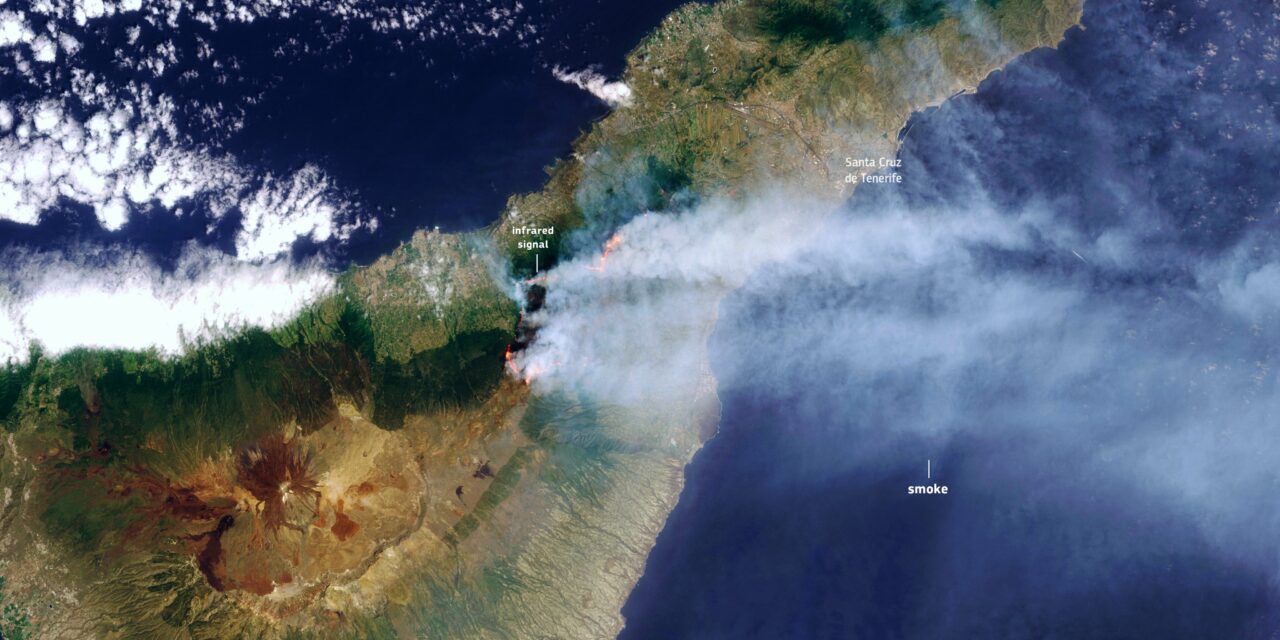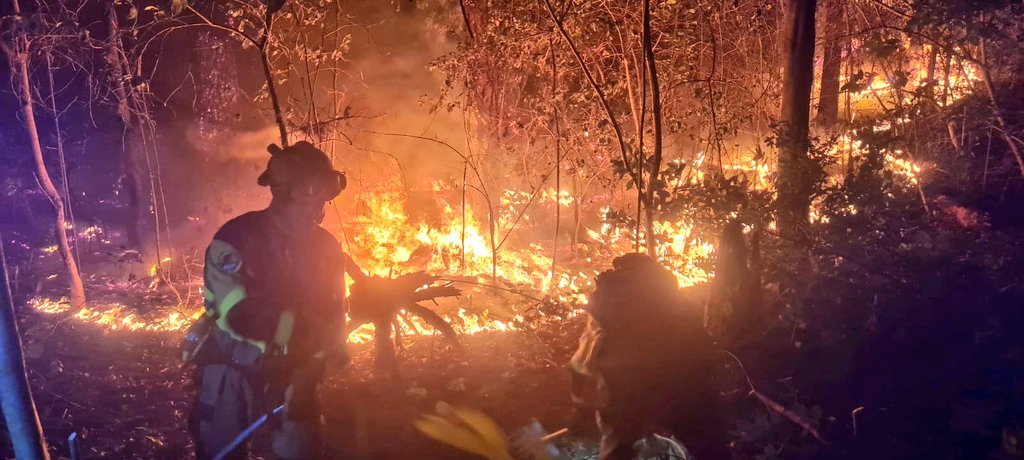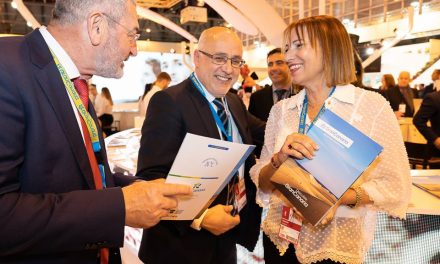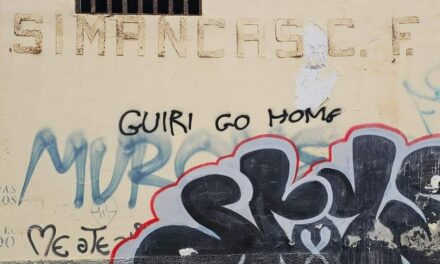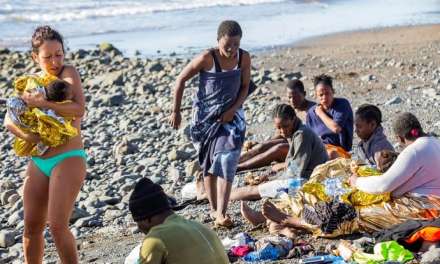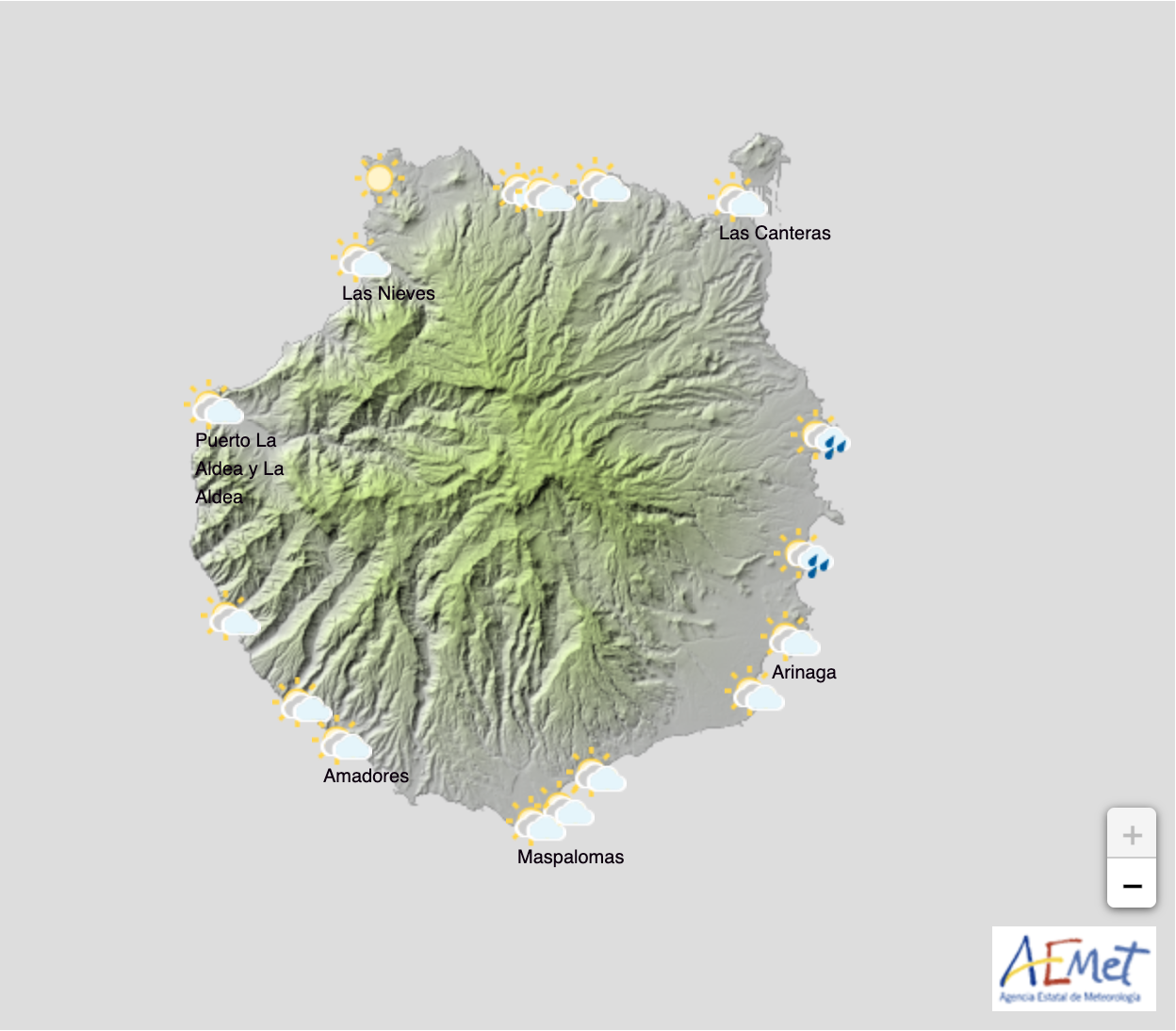Uncontrolled wildfires continue to wreak havoc through the protected natural pine forests on the picturesque island of Tenerife. However first reports this morning suggest that the night was calmer, with more favourable weather conditions than were expected. The situation is currently being evaluated at the Plan #INFOCA coordination meeting and at the end of it official information on the fire will be updated.
As of the latest reports, ferocious blazes have already consumed a staggering 8,400 hectares of land, in just 5 nights, and 4 days, leaving behind a trail of destruction and uncertainty. The situation has escalated to the point where it was being described as an inferno of unprecedented magnitude, with a perimeter spanning a daunting 70 kilometres with a front entrenched across the northern mountains of the island.
More than 12,000 evacuees
The advance of the fire has forced the confirmed evacuation of 12,679 people. On Saturday, the Minister of Social Welfare of the Canary Islands Government, Candelaria Delgado, advanced a figure of 26,000 evacuated, but that number actually referred to the potential based on the census of populations foreseeably affected. According to the information collected by the security forces and local administrations, the real number of residents currently evacuated only exceeds 12,000, still a massive number.
There will be more updated information this morning, however meteorological forecasts painted a grim picture for the night ahead, last night, predicting highly challenging conditions that were expected to exacerbate an already dire situation. The plight of Tenerife is far from ordinary, even being described as a “sixth generation” wildfire and it has compelled an all-hands-on-deck response from firefighting professionals and other emergency personnel.
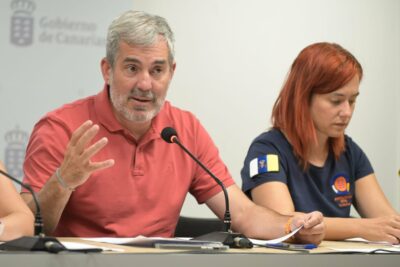 Fernando Clavijo, the president of the Canary Islands, has expressed cautious optimism amid the grim landscape. Despite adverse meteorological conditions that have stymied progress, with winds gusting at more than 60kmph, sustained temperatures of more than 34ºC in the shade and air humidity at below 30%, Clavijo reported that concerted efforts by aerial and ground teams have managed to stabilise an impressive 90% of the southern front’s perimeter. However, the same cannot be said for the northern front, where only a meagre 20% of the affected area has been brought under control.
Fernando Clavijo, the president of the Canary Islands, has expressed cautious optimism amid the grim landscape. Despite adverse meteorological conditions that have stymied progress, with winds gusting at more than 60kmph, sustained temperatures of more than 34ºC in the shade and air humidity at below 30%, Clavijo reported that concerted efforts by aerial and ground teams have managed to stabilise an impressive 90% of the southern front’s perimeter. However, the same cannot be said for the northern front, where only a meagre 20% of the affected area has been brought under control.
The potential impact is colossal, with estimates suggesting it could engulf up to a staggering 21,000 hectares. A daunting challenge that has pushed the capabilities of firefighters and emergency response teams to their limits and beyond. Federico Grillo, a seasoned technician from the Cabildo of Gran Canaria, highlighted several critical points of concern that could severely affect the volatile mix of nighttime and prevailing winds. These factors have been driving the fire with a menacing momentum towards the valley of La Orotava and beyond, threatening coastal areas and the community of Los Realejos.
The complexity of this situation is palpable, as technical experts and officials grapple with its unprecedented nature. This fire, they assert, exhibits characteristics beyond the norm, earning it the dubious distinction of a “sixth-generation fire.” Characterised by “tsunamis of flame” that can reach 60m in height which propel the rapid spread of the wildfire, this devastating phenomenon is often due to large, constant air streams in places that have so much combustible material (trees, vegetation, high temperatures, winds, weeds …), that large amounts of energy are suddenly released. This is how huge columns of hot air rise into the atmosphere, and re-feed the flames from the surface capable of creating “pyrocumulonimbus” columns of smoke which can reach over ten kilometres high capable of reaching the troposphere, underscoring the evolving challenges that firefighters are facing, necessitating a level of expertise and coordination that goes beyond routine firefighting measures.
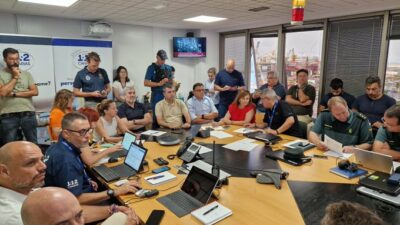 As the blaze continues on, the evacuation efforts have reached a critical juncture. Over 12,000 individuals have been forced to abandon their homes and seek refuge elsewhere. While this number is staggering, it is an act of resilience against the backdrop of such a formidable threat that there has so far been no loss of life reported and only minimal damage to private property. Rosa Dávila, the president of the Cabildo de Tenerife, island government, emphasised the complexity of the situation during a press conference, acknowledging that this is a fire on an unprecedented scale for the Canary Islands. She underscored the urgency and the gravity of the situation, referring to the ongoing work last night as likely to be “long and grueling.”
As the blaze continues on, the evacuation efforts have reached a critical juncture. Over 12,000 individuals have been forced to abandon their homes and seek refuge elsewhere. While this number is staggering, it is an act of resilience against the backdrop of such a formidable threat that there has so far been no loss of life reported and only minimal damage to private property. Rosa Dávila, the president of the Cabildo de Tenerife, island government, emphasised the complexity of the situation during a press conference, acknowledging that this is a fire on an unprecedented scale for the Canary Islands. She underscored the urgency and the gravity of the situation, referring to the ongoing work last night as likely to be “long and grueling.”
The primary concern amidst this chaos remains the safety and well-being of the people affected. Efforts have been directed at evacuating areas adjacent to the forested regions and the interface zones where the fire rages. The overarching goal is to carve out space for firefighters to wage their battle against the flames without endangering human lives. This mission, however, comes with its own set of challenges, as the fire’s unpredictable behaviour and unwavering intensity test the limits of preparedness and planning.
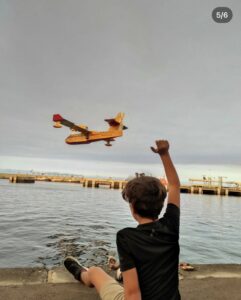 The response to this crisis has also been marked by an outpouring of support from both within and beyond the island. Clavijo commended the multitude of volunteers who have offered their assistance, but he underscored the importance of letting professionals with specialised training take the lead. This sentiment is echoed by Montserrat Román, a technical expert in the realm of Civil Protection, who cautioned against impromptu and reckless actions. She asserted that the magnitude of the fire necessitates the precision and expertise that only trained professionals can provide.
The response to this crisis has also been marked by an outpouring of support from both within and beyond the island. Clavijo commended the multitude of volunteers who have offered their assistance, but he underscored the importance of letting professionals with specialised training take the lead. This sentiment is echoed by Montserrat Román, a technical expert in the realm of Civil Protection, who cautioned against impromptu and reckless actions. She asserted that the magnitude of the fire necessitates the precision and expertise that only trained professionals can provide.
As the flames continue to devour some of the island’s important natural forests, the day ahead remains shrouded in uncertainty. The efforts of brave firefighting teams, emergency responders, and volunteers will be instrumental in turning the tide against this relentless blaze. The coming hours will be a true test of their resilience, expertise, and determination.
The president of the Canary Islands, Fernando Clavijo, received a visit from Spain’s acting Minister of the Interior, Fernando Grande-Marlaska, underscoring the gravity of the situation. Together with the director of firefighting efforts, Pedro Martínez, they surveyed the Advanced Post of Arafo. This site symbolises the focal point of the tireless battle that rages on, a testament to the collective will of those who are fighting to protect lives, homes, and the irreplaceable natural beauty of Tenerife. Acting Prime Minister Pedro Sanchez is expected to visit on Monday.
📢El índice de calidad del aire es DESFAVORABLE en diferentes municipios de la vertiente norte y sur de #Tenerife debido al humo generado por el incendio, compuesto por mezcla de gases y partículas pequeñas
Más información y recomendaciones ⬇️ pic.twitter.com/7ynYZvjQQO
— 1-1-2 Canarias (@112canarias) August 20, 2023

